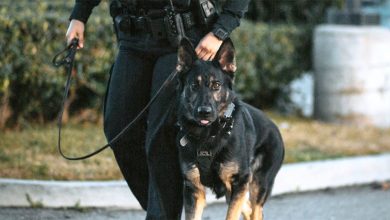How To Draw A Sitting Dog

1. Introduction
Drawing a sitting dog can be a fun and creative way to express yourself. Whether you are an experienced artist or a beginner, learning how to draw a sitting dog is a great way to improve your drawing skills. In this article, we will discuss the materials needed to draw a sitting dog, the steps involved in drawing a sitting dog, tips for creating a realistic-looking drawing, and examples of different types of sitting dogs.
2. Materials Needed to Draw a Sitting Dog
Before you start drawing a sitting dog, it’s important to have the right materials. You will need paper, pencils or pens, erasers, and colored pencils or markers if you want to color your drawing. You may also want to have reference images of different types of sitting dogs handy so you can use them as inspiration for your own drawings.
3. Drawing the Outline of the Sitting Dog
The first step in drawing a sitting dog is to sketch out the outline of the body. Start by lightly sketching an oval shape for the body and two circles for the head and tail. Then add four lines for the legs and two curved lines for the ears. Once you have the basic outline sketched out, you can start adding details like fur texture, facial features, and other details.
4. Adding Details to the Sitting Dog
Now that you have the basic outline of your sitting dog drawn out, it’s time to add some details. Start by adding facial features like eyes, nose, mouth, and whiskers if desired. You can also add fur texture by lightly sketching in short lines with your pencil or pen. Don’t forget to add details like paws and claws if desired!
5. Creating Depth and Dimension in the Sitting Dog Drawing
To make your sitting dog drawing look more realistic, it’s important to create depth and dimension in your drawing. To do this, use shading techniques such as hatching (drawing parallel lines) or cross-hatching (drawing intersecting lines). You can also use stippling (drawing small dots) or blending (blending colors together) to create more depth in your drawing.
6. Adding Fur to a Sitting Dog Drawing
Adding fur texture is an important part of creating a realistic-looking sitting dog drawing. To do this, draw short strokes with your pencil or pen that follow the contours of your dog’s body and face. Make sure that each stroke is slightly darker than the one before it so that it creates an overall fur effect when finished.
7. Coloring Your Sitting Dog Drawing
If you want to color your sitting dog drawing, use colored pencils or markers that match the colors of real-life dogs. Start with light colors first and gradually layer on darker shades until you achieve your desired look. When coloring fur texture, use lighter colors for highlights and darker colors for shadows so that it looks more realistic when finished.
8. Finishing Touches for Your Sitting Dog Drawing
Once you have finished coloring your sitting dog drawing, there are still some finishing touches you can add before calling it complete! Add some highlights with white paint or colored pencils around areas like eyes and nose for added realism. You can also add some small details like paw pads or whiskers if desired!
9. Tips for Drawing a Sitting Dog
When learning how to draw a sitting dog there are some tips that can help make your drawings look more realistic:
• Use reference images as inspiration for your drawings
• Take your time when sketching out each line – don’t rush!
• Use shading techniques such as hatching or cross-hatching to create depth in your drawings
• Add highlights with white paint or colored pencils around areas like eyes and nose
• Don’t forget small details like paw pads or whiskers!
10 Examples of Different Types of Sitting Dogs
There are many different types of sitting dogs out there ranging from small breeds like Chihuahuas and Pomeranians to large breeds like German Shepherds and Great Danes! Here are some examples of different types of sitting dogs:
• Chihuahua – These small dogs are known for their big personalities! They usually sit with their front paws tucked under them while their hind legs stretch out behind them in an “L” shape.
• Pomeranian – These fluffy little dogs usually sit with their back legs tucked under them while their front legs are stretched out in front of them in an “X” shape! They often look very alert when they sit down due to their bright eyes and perky ears!
• German Shepherd – These large dogs usually sit in an upright position with their back legs tucked underneath them while their front legs are stretched out in front of them in an “X” shape! They often look very alert due to their intense gaze and erect posture!
• Great Dane – These giant dogs usually sit with their back legs tucked underneath them while their front legs are stretched out in front of them in an “X” shape! They often look very dignified due to their large size and regal posture!
11 Conclusion
Drawing a sitting dog can be both fun and challenging but with practice anyone can learn how to draw one realistically! By following these steps outlined above along with using reference images as inspiration, you should be able to create beautiful drawings of all kinds of different types of sitting dogs!



